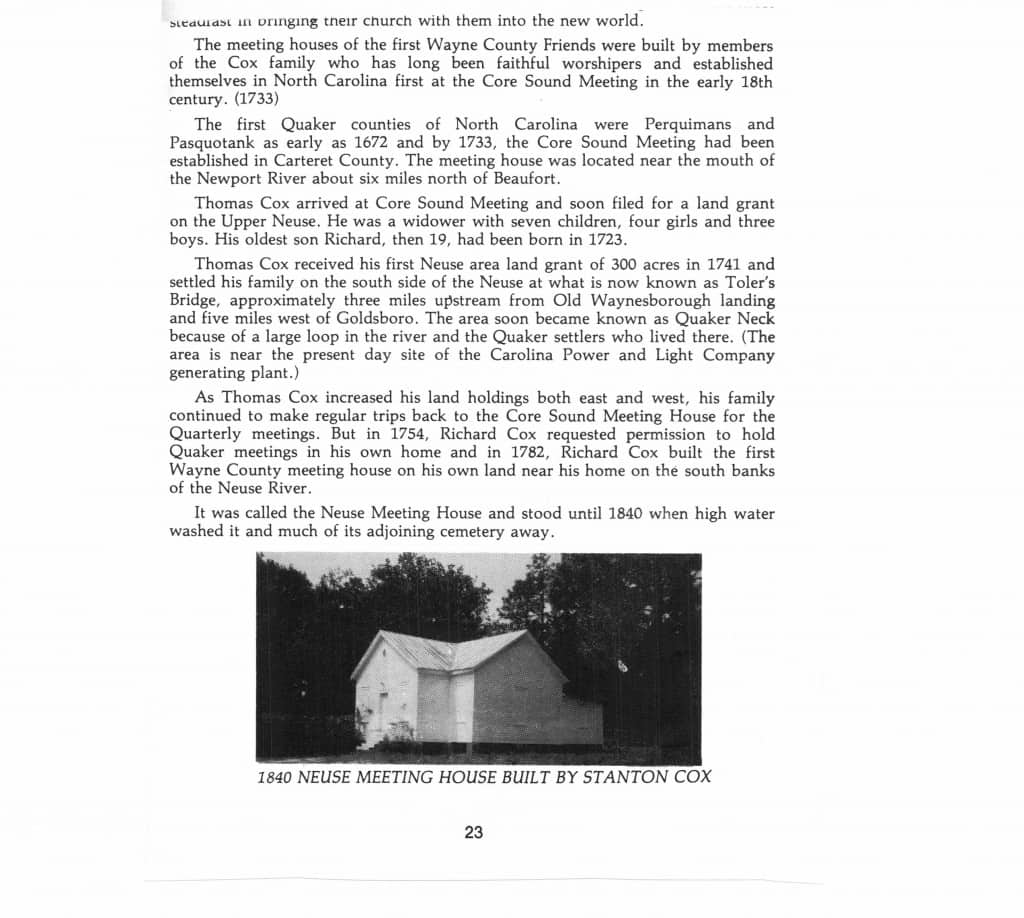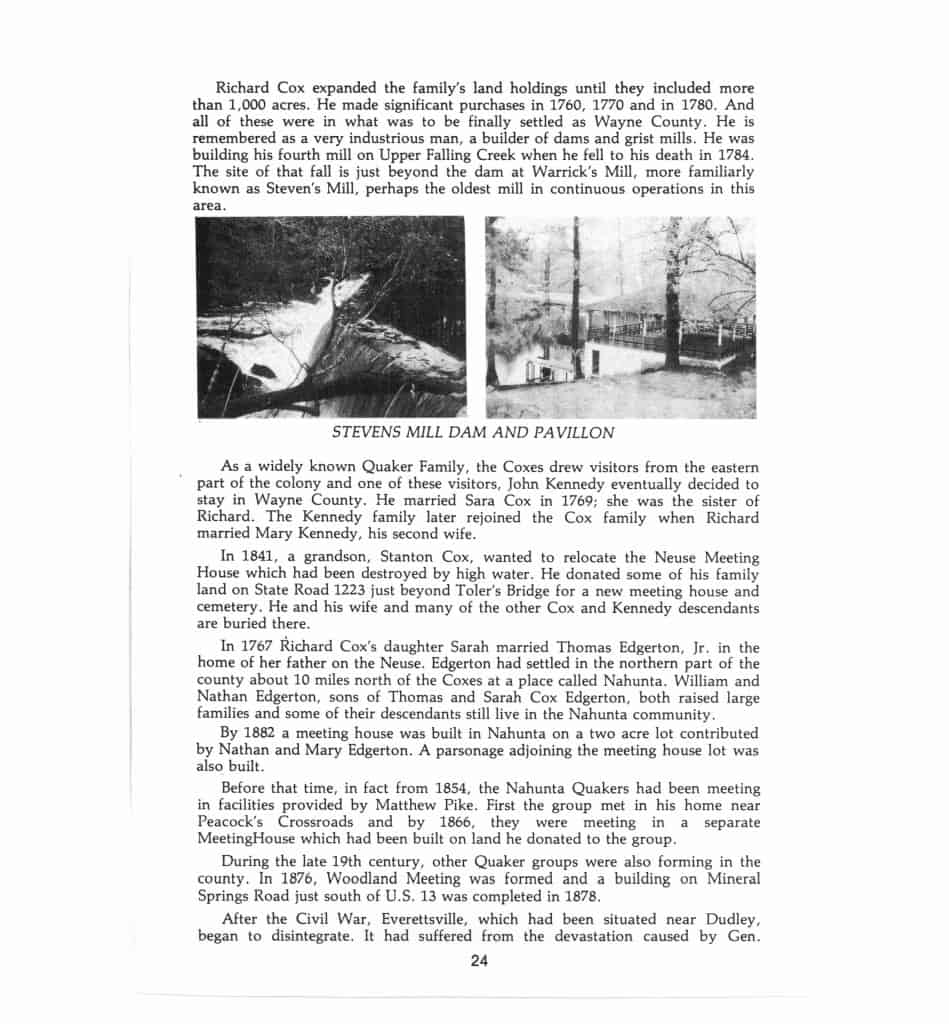One of the most influential groups of early settlers in what is now Wayne County were the members of the religious sect popularly known as Quakers.
Although thy preferred to be called members of the Religious Society of Friends, they were among the most accurate of early record keepers and the most steadfast in bringing their chcurch with them into the new world.
The meeting houses of the first Wayne County Friends were built by members of the Cox family who has long been faithful worshipers and established themselves in North Carolina first at the Core Sound Meeting in the early 18th century. (1733)
The first Quaker counties of North Carolina were Perquimans and Pasquotank as early as 1672 and by 1733, the Core Sound Meeting had been established in Carteret County. The meeting house was located near the mouth of the Newport River about six miles north of Beaufort.
Thomas Cox arrived at Core Sound Meeting and soon filed for a land grant on the Upper Neuse. He was a widower with seven children, four girls and three boys. His oldest son Richard, then 19, had been born in 1723.
Thomas Cox received his first Neuse area land grant of 300 acres in 1741 and settled his family on the south side of the Neuse at what is now known as Toler’s Bridge, approximately three miles upstream from Old Waynesborough landing and five miles west of Goldsboro. The area soon became known as Quaker Neck because of a large loop in the river and the Quaker settlers who lived there. (The area is near the present day site of the Carolina Power and Light Company generating plant)
As Thomas Cox increased his land holdings both east and west, his amily continued to make regular trips back to the Core Sound Meeting House for the Quarterly meetings. But in 1754, Richard Cox requested permission to hold Quaker meetings in his own home and in 1782. Richard Cox built the first Wayne County meeting house on his own land near his home on the south banks of the Neuse River.
It was called the Neuse Meeting House and stood until 1840 when high water washed it and much of its adjoining cemetery away.



Source: Family History Center, Salt Lake City
US/CAN
975.6395
H2hc